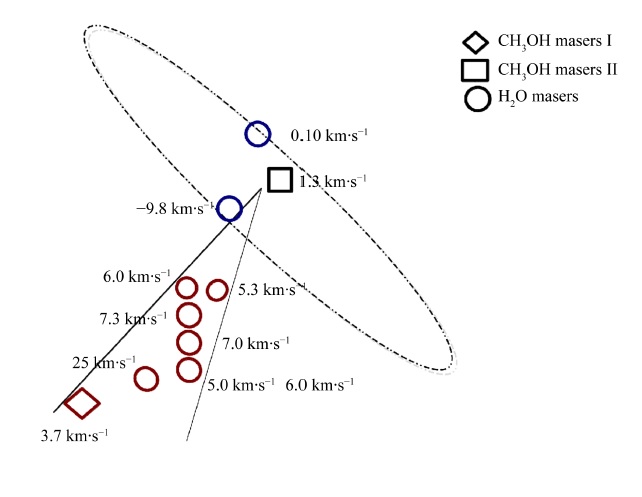The overall state of knowledge is well summarized by Tan, Beltran, Caselli et al. 1
The enormous radiative and mechanical luminosities of massive stars impact a vast range of scales and processes, from the reionization of the universe, to the evolution of galaxies, to the regulation of the interstellar medium, to the formation of star clusters, and even to the formation of planets around stars in such clusters. Two main classes of massive star formation theory are under active study, Core Accretion and Competitive Accretion. In Core Accretion, the initial conditions are self-gravitating, centrally concentrated cores that condense with a range of masses from the surrounding, fragmenting clump environment. They then undergo relatively ordered collapse via a central disk to form a single star or a small-N multiple. In this case, the pre-stellar core mass function has a similar form to the stellar initial mass function. In Competitive Accretion, the material that forms a massive star is drawn more chaotically from a wider region of the clump without passing through a phase of being in a massive, coherent core. In this case, massive star formation must proceed hand in hand with star cluster formation. If stellar densities become very high near the cluster center, then collisions between stars may also help to form the most massive stars. We review recent theoretical and observational progress towards understanding massive star formation, considering physical and chemical processes, comparisons with low and intermediate-mass stars, and connections to star cluster formation.
In short massive star formation is important because massive stars effect the space around them in a number of profound ways. As they live their radiation and luminosity effect the interstellar medium and planets of other stars around them. As they die they seed the interstellar medium with materials which will form new stars and planets. Every once in a while they are responsible for setting off massive gamma ray burst as they collapse to form more compact objects such as neutron stars and black holes. These massive stars either form by a disk outflow process similar to that of low and intermediate mass stars, or by collision of small proto stars. The key could be where they form. If they form in a globular cluster then collisions could be part of the story.
The evidence I collected and analysed for this paper 2 which is a refinement of my MS thesis completed at DePaul University and advised by Professor Anuj P Sarma, indicates that massive stars form by way of a disk outflow model. To quote myself.
As the recent publication by Breen et al. (2013) found, Class II methanol masers are exclusively associated with high mass star forming regions. Based on the positions of the Class I and II methanol and H2O masers, UC H II regions and 4.5 μm infrared sources, and the center velocities (vLSR) of the Class I methanol and H2O masers, compared to the vLSR of the Class II methanol masers, we propose three disk-outflow models that may be traced by methanol masers. In all three models, we have located the Class II methanol maser near the protostar, and the Class I methanol maser in the outflow, as is known from observations during the last twenty years. In our first model, the H2O masers trace the linear extent of the outflow. In our second model, the H2O masers are located in a circumstellar disk. In our third model, the H2O masers are located in one or more outflows near the terminating shock where the outflow impacts the ambient interstellar medium. Together, these models reiterate the utility of coordinated high angular resolution observations of high mass star forming regions in maser lines and associated star formation tracers.In plain English this is what I did. Previous work by Breen et al had shown that massive star formation is associated exclusively with Class II methanol masers 3. Masers are like lasers except they emit microwaves instead of visible light. I searched the literature for peer reviewed and published data on key star formation tracers near these Class II methanol masers. What I needed was the most accurate positional data available, so research which found trigonometric parallax distances to these Class II methanol maser sources using very long baseline interferometry was of the greatest value. With the distance to the Class II methanol maser source determined I calculated the distances between the Class II methanol masers and the other tracers, mapped them, recorded their relative red or blue shifts with respect to the Class II methanol maser and analysed the geometry and kinematics of each system for which there was sufficient data. For example this chart was made using data from the star forming region at galactic coordinates g9.62+0.19

The red colored sources are red shifted with respect to the Class II methanol maser. The blue ones are blue shifted with respect to the Class II methanol maser. Class I methanol masers and water masers are excited by molecular collisions. All of these details taken together lead to the conclusion that what we are seeing here is an outflow and an accretion disk.
There are many more details in the published paper 3.
- Massive Star Formation, Jonathan C. Tan, Maria T. Beltran, Paola Caselli, Francesco Fontani, Asuncion Fuente, Mark R. Krumholz, Christopher F. McKee, Andrea Stolte (arXiv:1402.0919)
- Farmer, H. (2014) Disk-Outflow Models as Applied to High Mass Star Forming Regions through Methanol and Water Maser Observations. International Journal of Astronomy and Astrophysics, 4, 571-597. doi: 10.4236/ijaa.2014.44053. (arXiv:1311.3983)
- Breen, S.L., Ellingsen, S.P., Contreras, Y., et al. (2013) Confirmation of the Exclusive Association between 6.7-GHz Methanol Masers and High-Mass Star Formation Regions. Monthly Notices of the Royal Astronomical Society, 435, 524-530. http://dx.doi.org/10.1093/mnras/stt1315




Comments